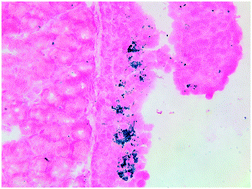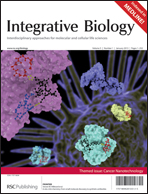Nanotechnology has great potential to produce novel therapeutic strategies that target malignant cells through the ability of nanoparticles to get access to and be ingested by living cells. However its specificity for accumulation in tumors, which is the key factor that determines its efficacy, has always been a challenge. Here we tested a novel strategy to target and treat ovarian cancer, a representative peritoneal cancer, using iron oxide nanoparticles (IONPs) and an alternating magnetic field (AMF). Peritoneal tumors in general are directly accessible to nanoparticles administered intraperitoneally (IP), as opposed to the more commonly attempted intravenous (IV) administration. In addition, tumor-associated immunosuppressive phagocytes, a predominant cell population in the tumor microenvironment of almost all solid tumors, and cells that are critical for tumor progression, are constantly recruited to the tumor, and therefore could possibly function to bring nanoparticles to tumors. Here we demonstrate that tumor-associated peritoneal phagocytes ingest and carry IONPs specifically to tumors and that these specifically delivered nanoparticles can damage tumor cells after IONP-mediated hyperthermia generated by AMF. This illustrates therapeutic possibilities of intraperitoneal (IP) injection of nanoparticles and subsequent ingestion by tumor-associated phagocytes, to directly impact tumors or stimulate antitumor immune responses. This approach could use IONPs combined with AMF as done here, or other nanoparticles with cytotoxic potential. Overall, the data presented here support IP injection of nanoparticles to utilize peritoneal phagocytes as a delivery vehicle in association with IONP-mediated hyperthermia as therapeutic strategies for ovarian and other peritoneal cancers.

You have access to this article
 Please wait while we load your content...
Something went wrong. Try again?
Please wait while we load your content...
Something went wrong. Try again?


 Please wait while we load your content...
Please wait while we load your content...